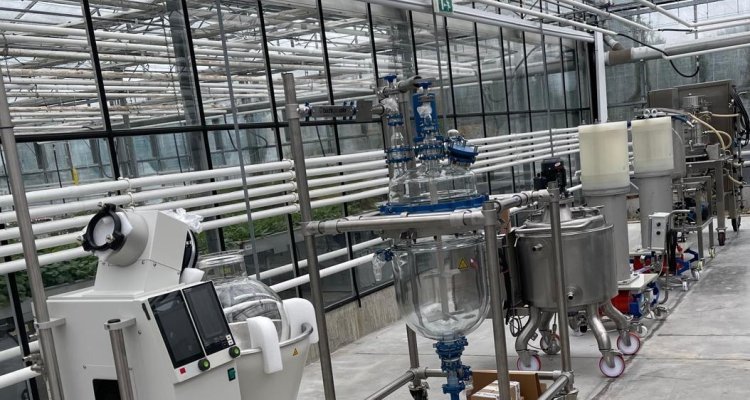
Project
Optimizing targeted protein recovery from yeast
Through precision fermentation, yeast can be used to produce dairy proteins to reduce our dependency on animal farming. In most cases these proteins are secreted, but the secretion of certain proteins remains challenging. This project therefore aims to develop an integrated process to obtain and (partially) separate the target protein from inside the cells. We will optimize individual process steps and monitor the functionality of the proteins.
Background
Yeasts, including Saccharomyces cerevisiae are among the most frequently used microorganisms in biotechnology with successful applications in the production of both bulk and fine chemicals. Yeast cells can also be genetically modified to produce proteins they do not naturally produce; so-called recombinant proteins in a process called Precision Fermentation. Several biopharmaceuticals produced in yeast have been successfully marketed, including insulin, human serum albumin and hepatitis vaccines.
Because several yeasts are generally recognized as safe (GRAS) by the Food and Drug Administration (FDA), they can also be used to produce food proteins, such as those found in milk. Yeasts can furthermore perform eukaryal post-translational modifications which are important to obtain functional proteins. Another important reason why yeasts are often preferred is because they can efficiently secrete most proteins. This means that the proteins accumulate in the medium and makes purification in the downstream processing easier. However some proteins, including dairy proteins like caseins, turn out difficult to secrete due to their secondary and tertiary structures. In other cases, extracellular protein excretion and recovery may not be possible given that some proteins can be sensitive or unstable in extracellular environments.
The production of hard-to-secrete or unstable proteins might be more efficient when instead these proteins accumulate intracellularly. However direct comparisons of yield, sustainability and costs of the entire process from bioconversion to refined product are scarce. Especially for the same protein, microbial host and expression system. In the bioprocess engineering group, in previous work on precision fermentation, different yeast strains have been constructed that express different (model) proteins either intracellularly or secreted.
Project description
The aim of this study is to develop and optimize a downstream process to recover targeted intracellular proteins from yeast. The yields and functionality of these proteins will be compared to those obtained from secretion-based processes. To realize this, the impact of upstream (strain), conversion (cultivation stage) and downstream (biorefinery) process parameters on protein yield, recovery, and quality will be examined in an integrative manner. By comprehensively analysing these factors, this research seeks to provide valuable insights into the optimization of precision fermentation bioprocesses, with the ultimate goal of achieving the highest possible protein yields from a yeast-based system.
The process consists of several steps: Upstream/bioconversion and a multistep downstream process. During the upstream optimisation, different yeast strains will be tested in different lab-scale cultivation set-ups, e.g., nutrient-limited fed-batch cultures, slow and fast growing cells.
The downstream process consists roughly of a cell concentration step, cell disruption, and (target) protein isolation and concentration. For each of these steps different existing technologies will be tested and optimized to increase protein recovery. Thereby we will not only focus on total and target protein titres, but also on maintained functionality and size-enrichments.